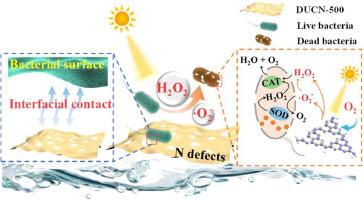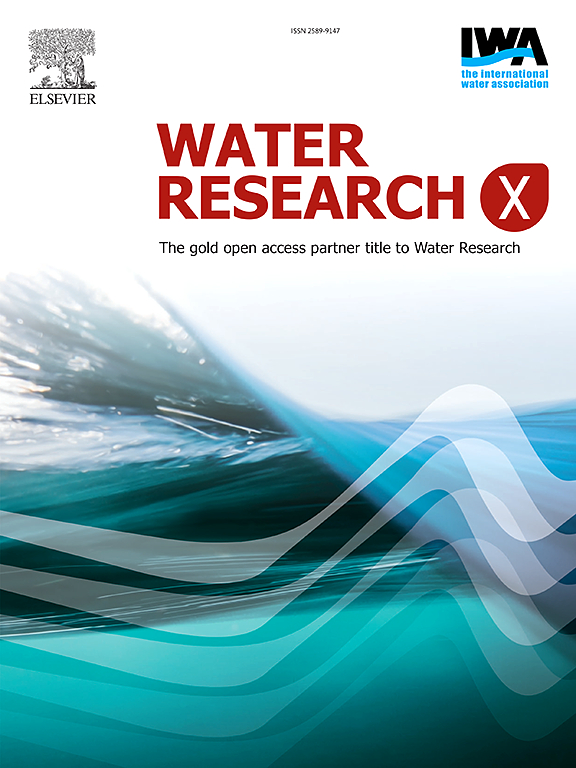Modulation of ultrathin nanosheet structure and nitrogen defects in graphitic carbon nitride for efficient photocatalytic bacterial inactivation
Abstract
The efficient generation and utilization of ROSs is a key step in determining the achievement of safe drinking water by photocatalytic bacterial inactivation technology. Although graphitic carbon nitride (g-C3N4) serves as a green and promising photocatalyst for water disinfection, insufficient bacterial capturing capacity and serious charge recombination of pristine g-C3N4 extremely restrict its bactericidal activity. Herein, we develop a facile thermal exfoliation and thermal polymerization method to prepare the nitrogen-defective ultrathin g-C3N4 nanosheets (DUCN-500). Our results showed that ultrathin nanosheet structure greatly enhanced bacterial capturing capacity of g-C3N4 to increase the utilization efficiency of ROS, which contributed to the performance of DUCN-500 greatly outperforming bulk g-C3N4. The nitrogen defects increased ROS generation (·O2− and H2O2) by approximately 4.6 times, which was attributed to negative shift of the conduction band potential and rapid separation of charge carriers. The DUCN-500 could rapidly and completely inactivate Escherichia coli and Bacillus subtilis in real sewage under simulated solar irradiation, accompanied by good anti-interference capability and stability. Additionally, bacterial morphology destruction, the loss of antioxidant enzyme activity and the leakage of protein were proven to be the main mechanisms of photocatalytic sterilization. This study offers new insight into the rational design of efficient g-C3N4-based photocatalysts for water disinfection.


 求助内容:
求助内容: 应助结果提醒方式:
应助结果提醒方式:


